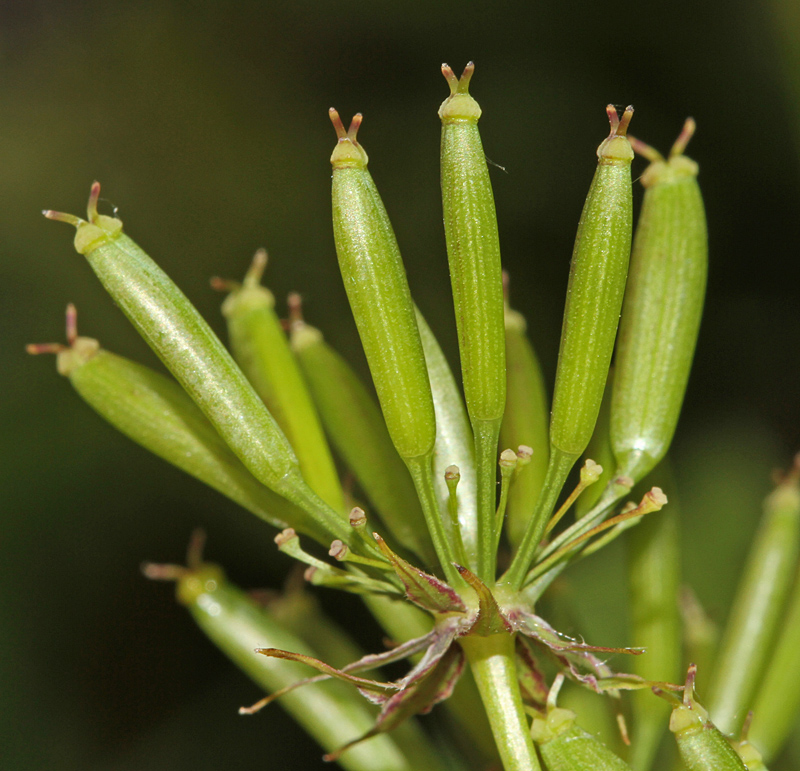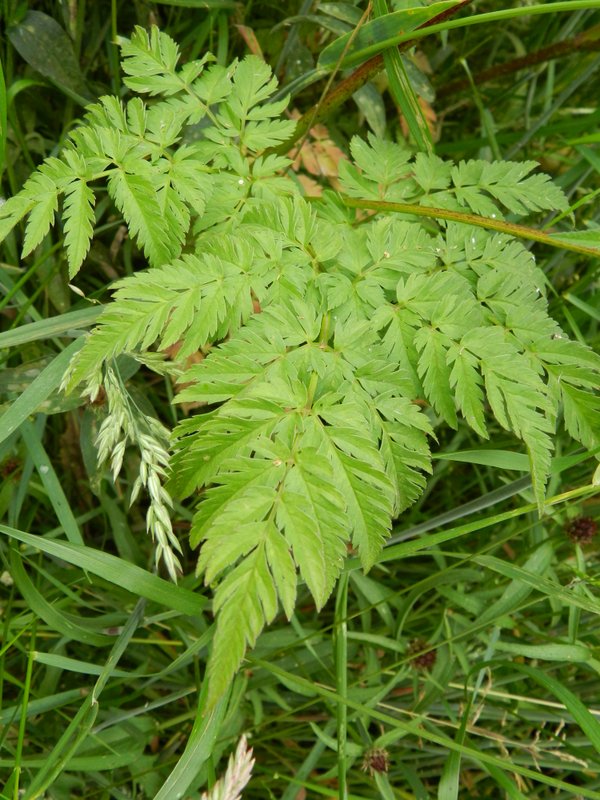Chaerophyllum aureum L. (C and E-Eur., SW-As.) – A very rare alien, probably an escape from cultivation or even introduced on purpose. Recently recorded on several occasions in Wallonia. First seen in Vesqueville (bois de Freux) in 1999 (gone in 2000), subsequently in Houffalize (Dinez) in 2000 (Saintenoy-Simon & Duvigneaud 2001). Furthermore claimed from the surroundings of Sommethonne (2008), Termes (2010) and Etalle (2013). In Flanders known since 2011 from grassland in Olmen-Asbroek (scattered individuals).
Residence status of Chaerophyllum aureum in Belgium is controversial. It might as well be an overlooked native or an alien. However, there seem to be no historical Belgian records and the area in which Chaerophyllum aureum is doubtlessly native obviously lies east of the Belgian frontiers. A recent record from a wood margin in Beauvoorde (near Steenvoorde; in northern France but very close to the Belgian frontiers) was classified as an escape from cultivation (Lambinon 1998). The exact status of a population in Luxembourg is also uncertain (Reichling 1958). Recent records in the Netherlands (Beringen & al. 2005) turned out to have been the result of sowing (Holverda & al. 2009).
Chaerophyllum aureum and native Anthriscus sylvestris are much alike and the former might be under-recorded. Both are best distinguished as follows: Chaerophyllum aureum has deeply bilobed petals, an unbeaked fruit that is golden at maturity and stems that are solid above and purple-spotted. In Anthriscus sylvestris petals are rounded or slightly retuse at apex, the fruit is shortly but distinctly beaked and black at maturity and the stem is hollow above and always unspotted.
 |
 |
 |
 |
 |
Selected literature:
Beringen R., Dirkse G. & van Moorsel R. (2005) Gouden ribzaad (Chaerophyllum aureum L.); onopgemerkt ingeburgerd. Gorteria 31: 110-121.
Gerstberger P. (1983) Blattanatomische Merkmale zur Unterscheidung von Anthriscus sylvestris und Chaerophyllum aureum. Gött. Flor. Rundbr. 17: 158-160.
Holverda W., van Moorsel R. & Duistermaat L. (2009) Nieuwe vondsten van zeldzame planten in 2005, 2006 en ten dele 2007. Gorteria 34: 1-40.
Lambinon J. (1998) La troisième édition de la version néerlandaise de la flore de la Belgique et des régions voisines: commentaires taxonomiques, nomenclaturaux et chorologiques. Dumortiera 70-71: 2-44.
Magda D. (1998) Effects of grassland extensification on the population dynamics of the invasive species Chaerophyllum aureum. Journal of Vegetation Science 9: 409-416.
Oklejewicz K. (1999) Chaerophyllum aureum (Apiaceae): a new holoagriophyte in the flora of Poland (in Polish). Fragm. Flor. Geobot. ser. Polon. 6: 292-296.
Reichling L. (1958) Notes floristiques. Observations faites dans le Grand-Duché de Luxembourg en 1957 et 1958. Soc. Natur. Luxemb., Bull. 63: 19-99.
Saintenoy-Simon J. & Duvigneaud J. (2001) Trouvailles floristiques récentes (1996-2000) en Wallonie, dans le Grand-Duché de Luxembourg et dans le nord de la France. Adoxa 30-31: 21-64.
Thévenin S., Bizot A., Worms C. & Gaignaires J.-M. (2015) Deux ombellifères intéressantes : Aethusa cynapium subsp. elata dans le département de la Marne et en limite de celui des Ardennes et Chaerophyllum aureum dans le département de la Marne. Bull. Soc. Hist. Nat. Ard. 104: 37-45.
Wattendorff J. (2003) Chaerophyllum temulum L. und Ch. aureum L., zwei in der Stadt Freiburg seltene, aber schon seit langem einheimische Doldenblütler (Botanische Spaziergänge um Freiburg im Üchtland, 6). Bulletin de la Société Fribourgeoise des Sciences Naturelles 92: 103-106. [available online at: http://www.unifr.ch/sfsn/pdf/vol%2092]
Wattez J.R. (2001) L'implantation de Chaerophyllum aureum L. dans la plaine de Santerre (Départment de la Somme). Monde Pl. 96(471): 18-19.

